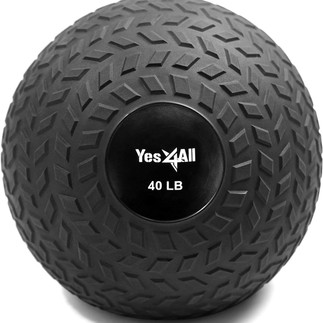
You hear the phrase "I hit a PR" all the time at the gym, but what does it actually mean?
Gym culture can take some getting used to, especially if you're new to working out. Fret not, though, because once you learn the lingo and set a consistent schedule, you'll be a certified gym bro/girl in no time.
And I can't help with the motivation part, but I can certainly teach you some of the terms.
What is a PR at the Gym?
PR stands for "personal record," and it's essentially the maximum amount of weight someone can lift on a machine or other piece of equipment.
If someone says, "I did a new PR on the bench today," it means they lifted the maximum amount of weight they can on the bench press. This term is most commonly used by weightlifters but can refer to other aspects of the gym, such as mile time or plank duration.
What Machines Can You PR on?
You can PR on pretty much any machine at the gym, but most people use it in reference to the three most popular lifts:
Deadlift
Bench Press
Squat
Still, this term is versatile and can refer to a max for anything from a shoulder press to calf raise.
How to Hit a PR
Hitting a personal best at the gym always feels great, but it's almost never easy. Sometimes, you can train every day and still somehow not improve at all, which sucks knowing your hard work is going down the drain.
If you've hit a wall in your training, keep these tips in mind before your next PR:
Take a Rest Day Beforehand
The best thing you can do for your body is to take a rest day before you attempt a PR. This gives your muscles time to recover and regenerate, so you're at maximum strength.
You don't have to take the entire day off from the gym either; just give the muscles you plan on using for your PR a rest. For instance, if you want to hit a PR on the squat rack the next day, then skip legs and focus on arms or chest.
Blast Your Favorite PR Music
Basically, play whatever gets you hyped in your headphones. It's been scientifically proven that music helps during exercise, and there's really no reason you shouldn't be playing it during your PR.
Pre-Workout Can Also Help
A scoop of pre-workout 30 minutes before you attempt a PR can make a world of difference.
Ingredients in pre-workout, such as beta-alanine, taurine, and creatine, can give your muscles the push they need to work past maximum capacity and hit that PR. The caffeine also helps a bit as it gives you a temporary boost in energy.
Just be careful with how much you take. Too much can have negative effects on your cardiovascular system and cause heart palpitations.
Use the Rule of Three
You should only attempt your PR a max of three times. If you fail all of them, then it's time to pack it up for the day.
If you can't hit a PR in the first couple of attempts, then it's likely you won't get it the more you try. As a matter of fact, the more attempts you take, the harder it will get to achieve a new best since you're constantly straining your muscles and forcing them to work at maximum capacity.
Don't lose heart if you fail a PR; you can't succeed every time, and sometimes you just need to work at a lower weight for a while to build yourself up.
Warm-up
This tip seems arbitrary, but the number of gym rats that skip this step is much higher than you'd think.
Warming up with some light stretches and reps at a lower weight can drastically improve your chances of hitting a PR because it prepares your muscles for action and loosens your joints, thus increasing your flexibility.
Ready to Hit a PR?
So, now that you know PR means a personal record, are you ready to go hit one? The first few are free since you'll be able to hit 2 or 3 when you first start going to the gym, but after that, it gets much harder.
Just keep the tips listed above in mind, and I can guarantee you'll go far in your training, regardless of what your specialty is.
What's your PR on your favorite exercise? Leave a comment telling me down below!






Comments